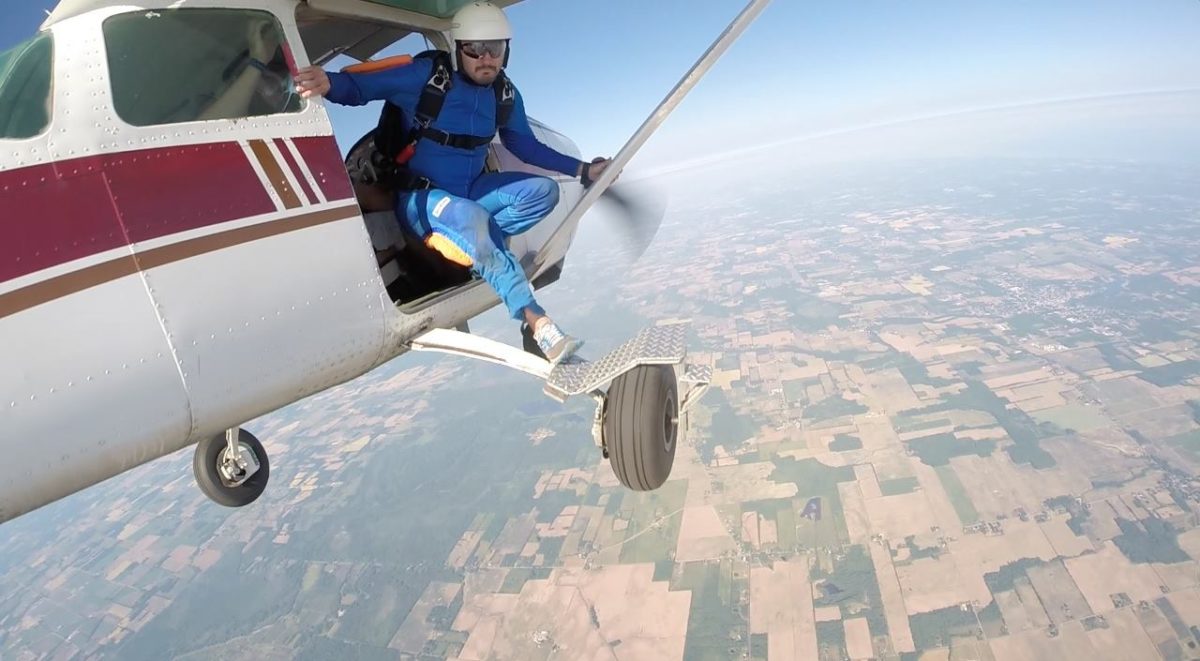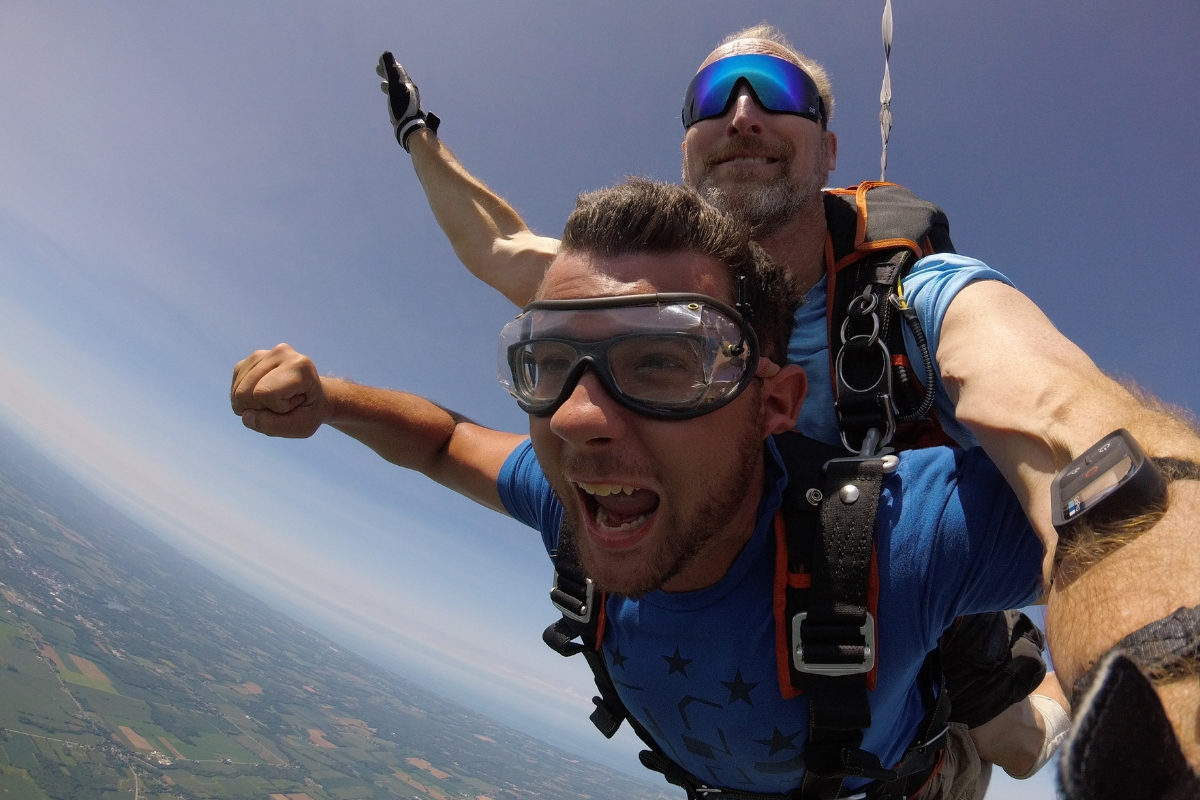If you’ve ever been sitting next to an unhappy kid on a commercial flight and wondered what would happen if you strapped on a parachute and got out – right then – you might be interested in knowing a little more about skydiving altitudes! We would suggest that you not hit the attendant button and ask, “Excuse me, can you skydive from 30,000 feet?” Let’s get that answered ahead of time so you’re ready for your next trials in the economy! It’s time to dive headfirst into the subject of skydiving height.
What Height Do You Skydive From As A Tandem Student?
Tandem skydiving heights are, generally speaking, performed from around 10,000 feet. At WNY Skydiving, we jump from between 10,000 and 14,000 feet. That’s between 2 and 2.65 miles above the earth’s surface!
The freefall part of the jump, which lasts for approximately 30 seconds, will cover much of that height. Between 5,000 and 6,000 feet, your instructor will deploy your shared parachute. From there, things slow way down. You’ll gently glide down for another four to five minutes. When your feet touch town, you’ll probably run straight back to manifest for another go-round.

From How Far Up Do Licensed Skydivers Jump?
Licensed skydivers – meaning those who’ve earned the privilege of making solo jumps after rigorous training – are liable to embrace the available variety of skydiving altitudes. For example, a sport skydiver might perform what’s known as a hop-n-pop. These cheeky little low-altitude jumps are completed from 3,500 to 5,000 feet, requiring the parachute to be deployed almost instantly after exit. These jumps are alllll about the canopy. Hop-n-pops are especially popular on days when cloud cover prevents access to higher altitudes.
Parachute opening heights, in general, are based on an individual’s experience level, which goes far to ensure that safety remains paramount. Case in point: skydivers might deploy a canopy way up high to enjoy the view or to maximize flying time with others. Experienced jumpers know that you should never intentionally deploy a parachute lower than 2,000 feet.
Why Do Different Dropzones Jump From Different Altitudes?
Variety, they say, is the spice of life, and it holds true in skydiving too! At most skydiving centers, the average altitude clocks in at around 10,000 feet. However, some operations are equipped with turbine skydiving aircraft (like WNY Skydiving!) which regularly whisk jumpers up to the rarefied air at 13,500 to 15,000 feet. This extra altitude not only means more freefall, but it also translates to more time to savor the breathtaking views before the parachute dance begins.
How Far Up Can You Jump From?
For those who crave even more altitude, check out the phenomenon known as HALO skydiving – that’s High Altitude, Low Opening. On a HALO jump, skydivers exit the aircraft at heights of 17,000 to 18,000 feet, so high you can see the curvature of the Earth.
There are, then, limits. For tandem skydivers, heights usually range from 8,000 to 14,000 feet, with safety considerations and the need for margins for parachute deployment factored in. Beyond 15,000 feet, supplemental oxygen is a necessity to combat the dangerous effects of hypoxia (oxygen deficiency).
It’s a rarity to find centers that dare to jump from 30,000 feet, but it does happen on a super-special-case basis for highly qualified sport skydivers. It does not, unfortunately, happen for your ready-to-bail self back there in the middle seat of row 15!

What’s The Record-Breaking Skydiving Altitude?
How high is skydiving if you’re doing the highest jump ever? Well. If you thought 14,000 or even 30,000 feet was mind-boggling, here’s a fun fact: the highest skydive ever recorded was from 135,889 feet, which is … well … space! That out-of-this-world jump was performed in 2014 by a Google Executive named Alan Eustace. The next highest was the 2012 Red Bull’s Stratos jump performed from 127,852 feet by Felix Baumgartner.
In the world of skydiving, altitude isn’t just a number; it’s a crucial ingredient. Whether you’re a first-timer taking the tandem plunge or a licensed pro wearing your altimeter, the only thing you need to know about skydiving altitude is that you need more of it in your life!!
Ready to take the leap and experience the rush of a lifetime? Brace yourself for an altitude that’ll redefine your definition of high. Book your tandem skydiving experience today, and you can watch your very own altimeter count you down from the top! Blue skies.
Ready to check out what height you skydive from first hand? We’d love to give you a bird’s eye view on your tandem skydive from 10,000 feet! Call WNY Skydiving today!





